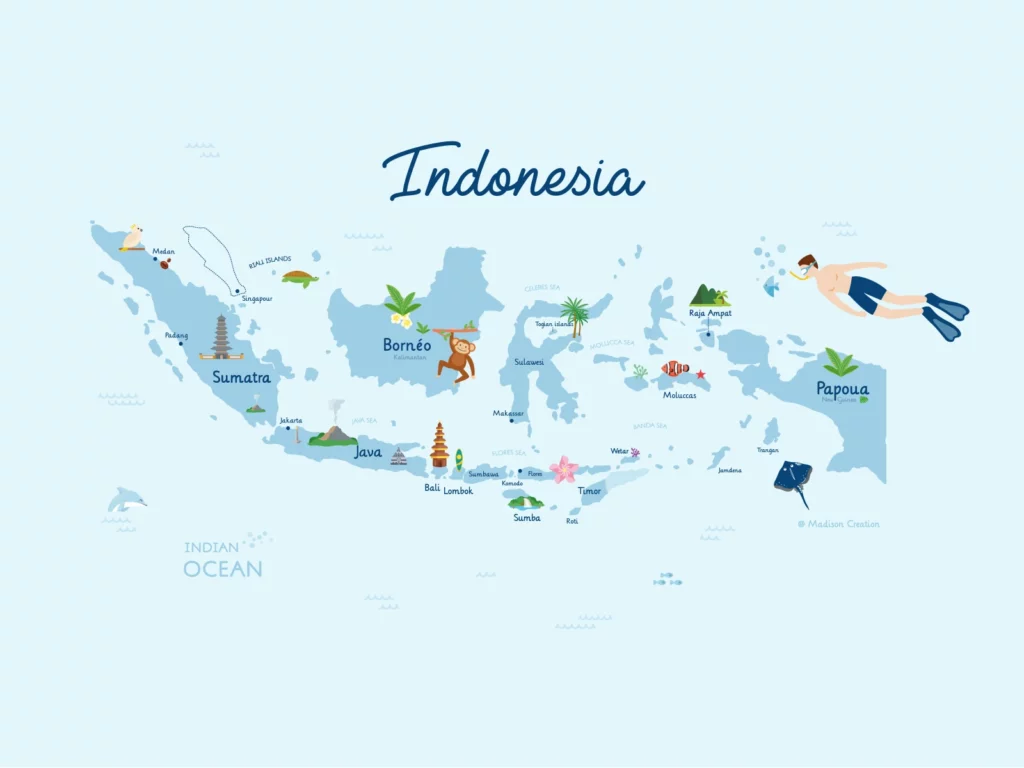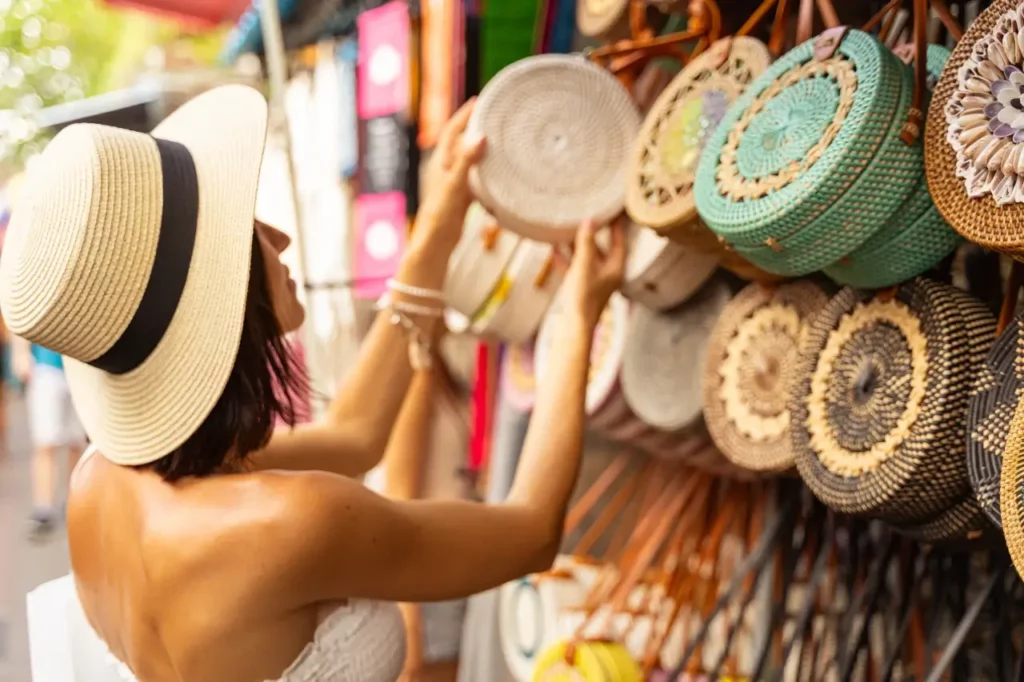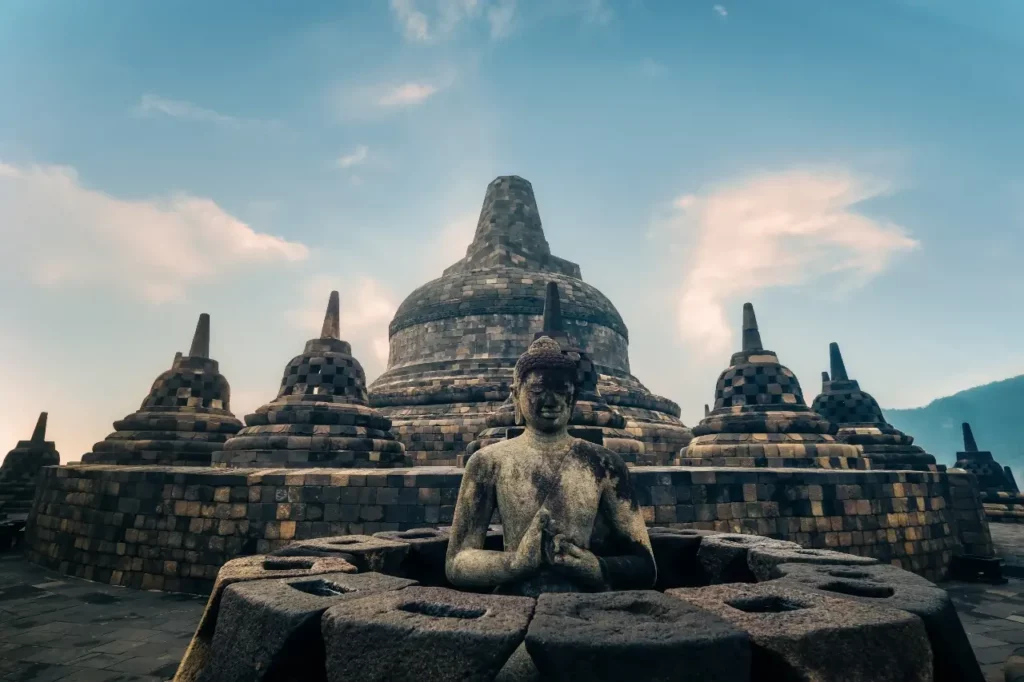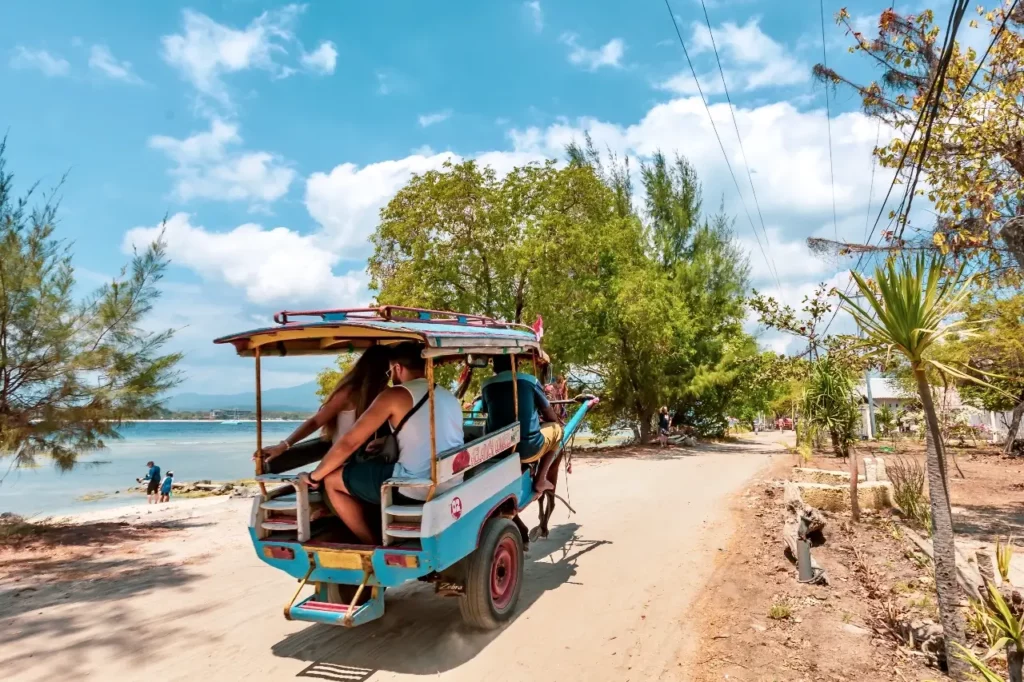This group of islands is a linguist’s paradise, boasting a rich tapestry of languages.
At the forefront is Bahasa Indonesia, a unifying tongue spoken from the bustling streets of Jakarta to the serene beaches of Sumbawa.
But, what language do they speak in Bali?
Let’s uncover the vibrant spectrum of Indonesia’s language diversity, a true testament to Indonesia’s cultural richness and unity.
The linguistic landscape of Indonesia
With over 17,000 islands, it’s no surprise that this nation is a melting pot of linguistic diversity.
Interestingly, Indonesia is home to over 700 languages.
This places it as one of the most linguistically diverse countries in the world.
Now, imagine a map of Indonesia.
Each region is dotted with a unique set of languages.
From the western tip of Aceh to the eastern edge of Papua, every island has its own linguistic identity.
This diversity is a result of the country’s rich history, diverse ethnic groups, and varying geographical landscapes.
But amidst this diversity, Bahasa Indonesia stands out as the unifying language.
It’s fascinating how Bahasa Indonesia, initially a language of traders and not widely spoken, transformed into the glue that holds the nation’s linguistic diversity together.

Bahasa Indonesia – the unifying tongue
Bahasa Indonesia’s history is as rich and diverse as the country itself.
Initially, it was a language of trade, known as ‘Malay’, used in the bustling markets and ports across the scattered islands.
This tongue was the common thread among the diverse ethnic groups engaged in trade.
When Indonesia declared its independence in 1945, Bahasa Indonesia was chosen as the national language.
This decision wasn’t just practical; it was symbolic.
It marked a new chapter, a unified identity for a nation with a kaleidoscope of cultures and languages.
The influence of Dutch colonisation on Bahasa Indonesia is significant.
For over three centuries, the Dutch controlled various parts of Indonesia.
This long period of colonial rule left an imprint on the Indonesian language.
Many Dutch words have been woven into Bahasa Indonesia, creating a linguistic tapestry that tells a story of its colonial past.
Words like “kantor” (office) from “kantoor” and “apotek” (pharmacy) from “apotheek” are just a couple of examples.
What language do they speak in Bali?
Balinese is more than just a means of communication; it’s a celebration of the island’s heritage, whispered through its temples, rice fields, and ceremonies.
In Bali, you’ll hear the melodic tones of Balinese and the more universally known Bahasa Indonesia.
While Bahasa Indonesia serves as the official language, bridging the gap between different regions, Balinese is the heartbeat of local communication.
But Balinese isn’t just for the locals.
It welcomes travellers too.
You’ll find that even a simple ‘Om Swastyastu’ (a greeting) or ‘Suksema’ (thank you) can open doors to heartwarming smiles and deeper cultural experiences.
The language itself is unique.
Balinese has three levels of speech – low, middle, and high – each used based on the social context and the status of the person you’re speaking to.
It’s like changing your outfit based on the occasion, showing respect and understanding of social hierarchies.
This complexity adds to the language’s beauty, making it a fascinating study for linguists and travellers alike.

Handy phrases in Bahasa Indonesia and Balinese
When you’re in Indonesia or Bali, knowing a few key phrases in Bahasa Indonesia and Balinese can go a long way.
Here are some basic phrases that can help you blend in, or at least, not stand out as a total tourist.
Bahasa Indonesia:
- Hello – “Halo” (HAH-loh)
- Thank You – “Terima kasih” (Tuh-REE-mah KAH-see)
- Yes – “Ya” (Yah) / No – “Tidak” (TEE-dahk)
- How much? – “Berapa harga?” (Buh-RAH-pah HAR-gah?)
- Where is…? – “Di mana…?” (Dee MAH-nah…?)
Balinese:
- Good Morning – “Rahajeng Semeng” (RAH-ha-jeng SE-meng)
- Please – “Tulung” (Too-loong)
- Excuse me – “Permisi” (Pur-MEE-see)
- I don’t understand – “Tianga ten nemu” (Tee-ANG-gah ten NE-moo)
- Can you help me? – “Bisa bantu tiang?” (BEE-sah BAN-too tee-ANG?)
I remember once trying to haggle in a market in Sumbawa when my husband and I were staying at Kirana Retreat.
I started with a shaky “Berapa harga?” and the vendor’s face lit up.
We ended up chatting, with my broken Bahasa and lots of hand gestures.
It didn’t get me a huge discount, but it definitely broke the ice.
The point is, it’s not about fluency; it’s about effort.
The locals are used to being disrespected by tourists so when locals see you trying, it bridges gaps.
It’s like saying, “I respect your culture and want to try to speak your language.”
And often, that earns you a smile, maybe a friend, and a richer travel experience.

Other common languages in Indonesia
Beyond Bali, Indonesia’s linguistic tapestry is rich and diverse, with several threads more prominent than others.
Let’s look at a few key languages like Javanese, Sundanese, and Madurese, which add vibrant colours to this tapestry.
First up, Javanese.
Spoken primarily in Java, Indonesia’s most populous island.
Javanese isn’t just about words; it’s a dance of respect and tradition.
Like Balinese, it has different speech levels, reflecting the social hierarchy.
To the Javanese, their language is a treasure, a living history of their majestic temples and royal courts.
Next, let’s swing over to Sundanese, the melody of West Java.
It’s spoken by the Sunda people, and it has a musical quality that mirrors the region’s lush, green landscapes.
Sundanese is expressed through their angklung music and wayang golek puppetry.
It’s like the rhythm that guides their daily life, from the rice fields to the bustling cities.
Last but not least, Madurese.
This language, originating from the island of Madura and parts of East Java, is like the spice in Indonesia’s linguistic curry.
It’s robust, straightforward, and full of character.
To hear Madurese is to hear the waves crashing against Madura’s rugged coastline and to feel the spirit of its famous bull races.
It’s a language that encapsulates the resilience and vigour of its people.
Each of these languages tells a story, woven into the fabric of Indonesia’s cultural heritage.
They’re badges of regional pride, each with its unique cadence and charm.
Learning and appreciating local languages
One of the best ways to dive deep into its culture is by learning a bit of the local language.
Picking up basic phrases in Bahasa Indonesia and Balinese isn’t just about practical communication;
it’s about showing respect and making a connection with the people you meet.
Start with simple greetings like ‘Selamat pagi’ (good morning) in Bahasa Indonesia or ‘Om Swastyastu’ in Balinese.
Or learning to say ‘Thank you’ – ‘Terima kasih’ in Bahasa and ‘Suksema’ in Balinese – goes a long way in showing gratitude and appreciation.
Language learning apps and online resources can be your best friends here.
Websites like Duolingo or Babbel offer beginner courses in Bahasa Indonesia.
For Balinese, resources might be less common, but websites dedicated to the Balinese culture often have language sections.
Even YouTube can be a goldmine for quick and practical language lessons.
Your next adventure
As a traveller, exploring these languages offers a unique lens through which to view and appreciate the nation’s rich cultural diversity.
and hopefully, you now have a better understanding of “what languages do they speak in bali?”
Reflecting on my journey through Indonesia, the beauty of its languages struck me profoundly.
Each conversation, whether in Bahasa Indonesia or one of the regional languages, was a step closer to understanding the heart and soul of this amazing country.
So, as you plan your trip, consider this:
How might learning a few phrases in the local language transform your travel experience?
Imagine the doors it could open, the friendships it could foster, and the depth it could add to your journey.



